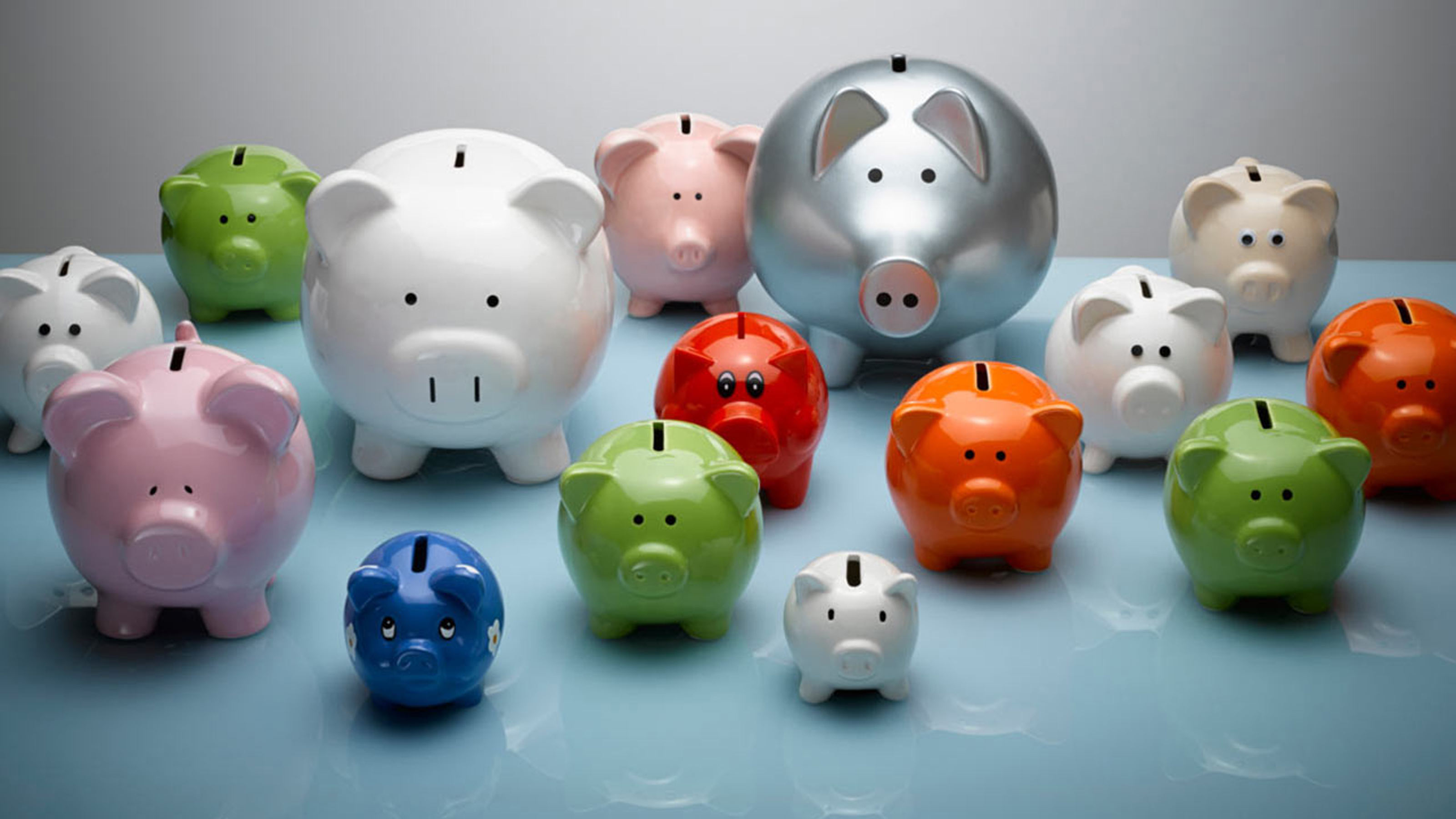3 Smart Places to Save Now
Boomers planning on retiring in the next several years should consider these three tax-smart moves now. They can help you cut the taxes you’ll pay on your income – especially on your Social Security benefits – down the road.


With Social Security set to deplete one year earlier than expected, taxes on retirement benefits may only get worse, not better. Currently, 15% of your Social Security benefit is tax-free. For the other 85%, it all depends on your “provisional income.” So, it’s important to be able to manage your income in retirement, and one way to do that is to make sure you are saving in the right places.
Provisional income is your gross income – wages, pensions, interest, dividends and capital gains – plus tax-free interest, plus half of your overall Social Security benefit. If your provisional income exceeds $34,000 on a single return or $44,000 on a joint return, up to 85% of your benefits may be taxable at your tax rate (See Calculating Taxes on Social Security Benefits).
Fortunately, there are planning opportunities for retirees and non-retirees alike to help lower that tax burden. Here are three of those strategies:
From just $107.88 $24.99 for Kiplinger Personal Finance
Become a smarter, better informed investor. Subscribe from just $107.88 $24.99, plus get up to 4 Special Issues

Sign up for Kiplinger’s Free Newsletters
Profit and prosper with the best of expert advice on investing, taxes, retirement, personal finance and more - straight to your e-mail.
Profit and prosper with the best of expert advice - straight to your e-mail.
1. How to Use Roth IRAs to Control Your Taxes in Retirement
Retirees usually have the bulk of their nest egg in taxable retirement accounts. Withdrawals from traditional IRAs and 401(k)s are considered gross income for the Social Security provisional income calculation. However, qualified withdraws from Roth IRAs are not: They are income-tax free.
Some may want to convert traditional IRAs to a Roth for tax-free withdrawals in the future. There are a few caveats to consider. Those still working can contribute to a Roth IRA if their income does not exceed certain thresholds. For those whose incomes are too high, the mega-back door Roth may be an option.
In retirement, I tell my clients to withdraw from Roth IRAs only when their total income may push them into the next tax bracket or when their total income makes their Social Security benefits taxable. For instance, say a married client with $40,000 of provisional income needs an additional $10,000. That client could consider withdrawing $4,000 from their 401(k) and $6,000 from a Roth IRA. This way their total income does not exceed the $44,000 provisional income threshold.
2. Health Savings Accounts Can Come in Handy, Too
Using a health savings account (HSA) is another great way to keep your future taxes down. For those with an HSA — keep in mind that you must have a high-deductible medical plan at work to contribute to an HSA — distributions for most medical and dental expenses are income-tax free. For my clients who are working, I always encourage them to fund their HSA each year but try not to use it – save it for your costs in retirement instead.
HSA withdrawals are tax-free when used to pay for Medicare or other qualified medical expenses in retirement. And unlike withdrawals from a traditional 401(k), qualified withdrawals from an HSA are not taxable and won’t make your Social Security benefits taxable either.
One trick for those looking to up their HSA account is to do a one-time transfer from an IRA. Currently, the IRS allows a truly once-in-a-lifetime transfer from their IRA to HSA. The IRA distribution amount is limited to the annual HSA contribution – up to $7,200 for a family for 2021 – and it must be made directly from the IRA to the HSA, but it is not included as income (IRS Pub 969).
3. Using Whole Life Insurance as a Tool
The proposed Biden tax increase piqued interest in life insurance in 2021. Cash value life insurance, such as whole life policies, has many benefits, including the ability to borrow from the policy without incurring income taxes. Money borrowed from a whole life policy is a tax-free loan, and if not paid back, reduces the death benefit.
For my clients, whole life gives us additional options. For instance, we can borrow from the policy in any given year instead of taking 401(k) withdrawals, which may cause their Social Security to be taxed. Or if a client needs a large cash infusion for a remodeling project or a vacation, we may consider borrowing from the whole life policy tax-free instead of taking a taxable distribution from their 401(k). Whole life doesn’t make sense for everyone, especially those who are older, as it may be too expensive. But for those who are still working and have a family, it is another tool in the financial planning toolbox.
Financial planning is about thinking ahead and creating options for your future self. If you are still working and have the ability to save money, you want to be mindful of where to save. Each account has its own pros and cons, so it is about balance.
If you save all your money in a traditional 401(k), that helps on taxes today, but will sting later in retirement when you withdraw money. The key is to think about tax-diversification. Tax-diversification is about having some money that, when withdrawn, is taxable in the future and some that is tax-free. If you can combine those two — tax-free with taxable — you have a better chance of lowering your future tax burden. Your future self will thank you.
Investment advisory and financial planning services are offered through Summit Financial LLC, an SEC Registered Investment Adviser, 4 Campus Drive, Parsippany, NJ 07054. Tel. 973-285-3600 Fax. 973-285-3666. This material is for your information and guidance and is not intended as legal or tax advice. Clients should make all decisions regarding the tax and legal implications of their investments and plans after consulting with their independent tax or legal advisers. Individual investor portfolios must be constructed based on the individual’s financial resources, investment goals, risk tolerance, investment time horizon, tax situation and other relevant factors. Past performance is not a guarantee of future results. The views and opinions expressed in this article are solely those of the author and should not be attributed to Summit Financial LLC. Links to third-party websites are provided for your convenience and informational purposes only. Summit is not responsible for the information contained on third-party websites. The Summit financial planning design team admitted attorneys and/or CPAs, who act exclusively in a non-representative capacity with respect to Summit’s clients. Neither they nor Summit provide tax or legal advice to clients. Any tax statements contained herein were not intended or written to be used, and cannot be used, for the purpose of avoiding U.S. federal, state or local taxes.
Profit and prosper with the best of Kiplinger's advice on investing, taxes, retirement, personal finance and much more. Delivered daily. Enter your email in the box and click Sign Me Up.

Michael Aloi is a CERTIFIED FINANCIAL PLANNER™ Practitioner and Accredited Wealth Management Advisor℠ with Summit Financial, LLC. With 21 years of experience, Michael specializes in working with executives, professionals and retirees. Since he joined Summit Financial, LLC, Michael has built a process that emphasizes the integration of various facets of financial planning. Supported by a team of in-house estate and income tax specialists, Michael offers his clients coordinated solutions to scattered problems.
-
 'Donroe Doctrine' Pumps Dow 594 Points: Stock Market Today
'Donroe Doctrine' Pumps Dow 594 Points: Stock Market TodayThe S&P 500 rallied but failed to turn the "Santa Claus Rally" indicator positive for 2026.
-
 The Wealth Equation: Balancing Money and Stress
The Wealth Equation: Balancing Money and StressSponsored Don’t let assets be a liability that strains your family.
-
 Is Your Emergency Fund Running Low? Here's How to Bulk It Up
Is Your Emergency Fund Running Low? Here's How to Bulk It UpIf you're struggling right now, you're not alone. Here's how you can identify financial issues, implement a budget and prioritize rebuilding your emergency fund.
-
 Is Your Emergency Fund Running Low? Here's How to Bulk It Back Up
Is Your Emergency Fund Running Low? Here's How to Bulk It Back UpIf you're struggling right now, you're not alone. Here's how you can identify financial issues, implement a budget and prioritize rebuilding your emergency fund.
-
 An Expert Guide to How All-Assets Planning Offers a Better Retirement
An Expert Guide to How All-Assets Planning Offers a Better RetirementAn "all-asset" strategy would integrate housing wealth and annuities with traditional investments to generate more income and liquid savings for retirees.
-
 7 Tax Blunders to Avoid in Your First Year of Retirement, From a Seasoned Financial Planner
7 Tax Blunders to Avoid in Your First Year of Retirement, From a Seasoned Financial PlannerA business-as-usual approach to taxes in the first year of retirement can lead to silly trip-ups that erode your nest egg. Here are seven common goofs to avoid.
-
 How to Plan for Social Security in 2026's Changing Landscape, From a Financial Professional
How to Plan for Social Security in 2026's Changing Landscape, From a Financial ProfessionalNot understanding how the upcoming changes in 2026 might affect you could put your financial security in retirement at risk. This is what you need to know.
-
 6 Overlooked Areas That Can Make or Break Your Retirement, From a Retirement Adviser
6 Overlooked Areas That Can Make or Break Your Retirement, From a Retirement AdviserIf you're heading into retirement with scattered and uncertain plans, distilling them into these six areas can ensure you thrive in later life.
-
 I'm a Wealth Adviser: These Are the 7 Risks Your Retirement Plan Should Address
I'm a Wealth Adviser: These Are the 7 Risks Your Retirement Plan Should AddressYour retirement needs to be able to withstand several major threats, including inflation, longevity, long-term care costs, market swings and more.
-
 High-Net-Worth Retirees: Don't Overlook These Benefits of Social Security
High-Net-Worth Retirees: Don't Overlook These Benefits of Social SecurityWealthy retirees often overlook Social Security. But timed properly, it can drive tax efficiency, keep Medicare costs in check and strengthen your legacy.
-
 Do You Have an Insurance Coverage Gap for Your Valuables? You May Be Surprised to Learn You Do
Do You Have an Insurance Coverage Gap for Your Valuables? You May Be Surprised to Learn You DoStandard homeowners insurance usually has strict limits on high-value items, so you should formally "schedule" these valuable possessions with your insurer.